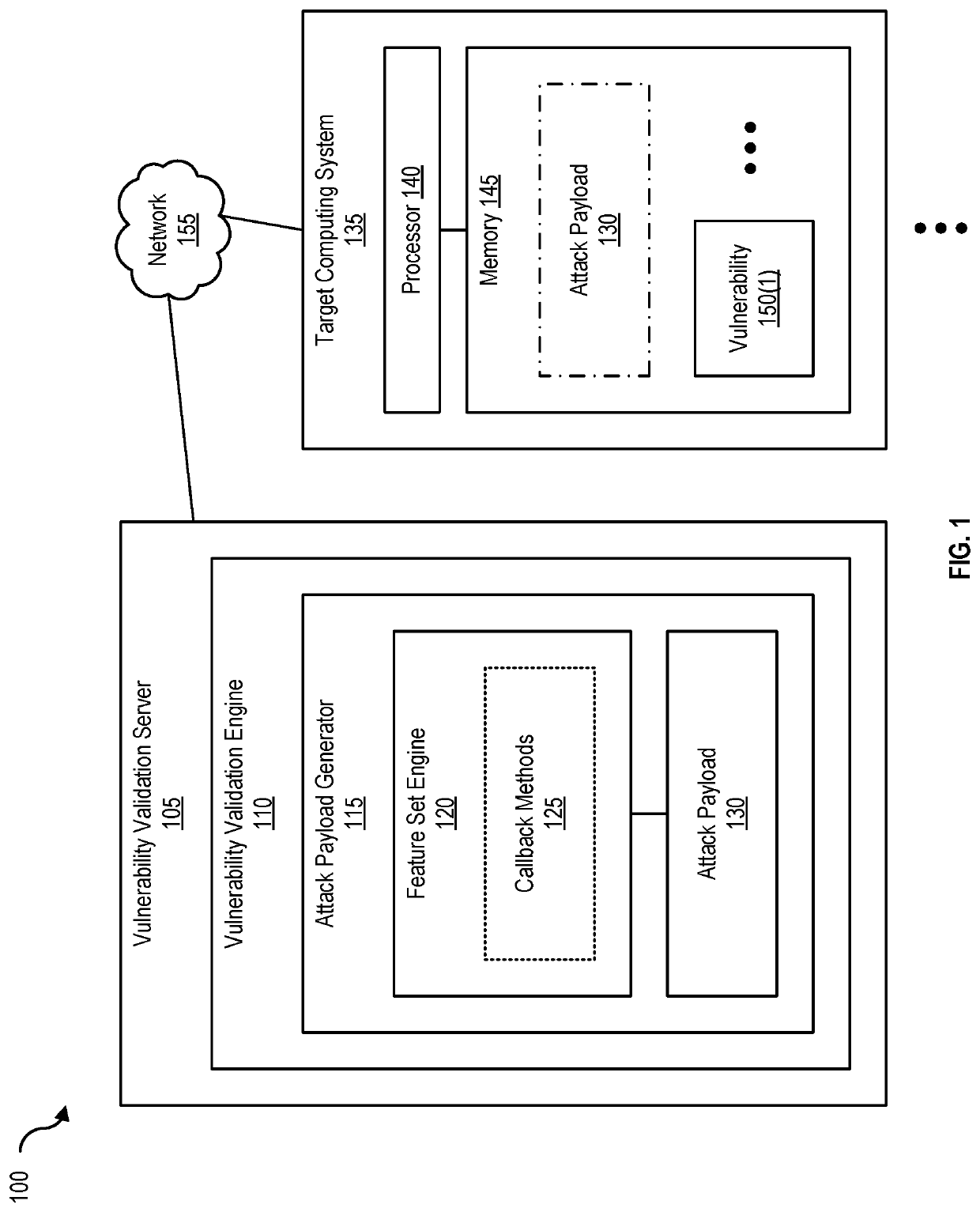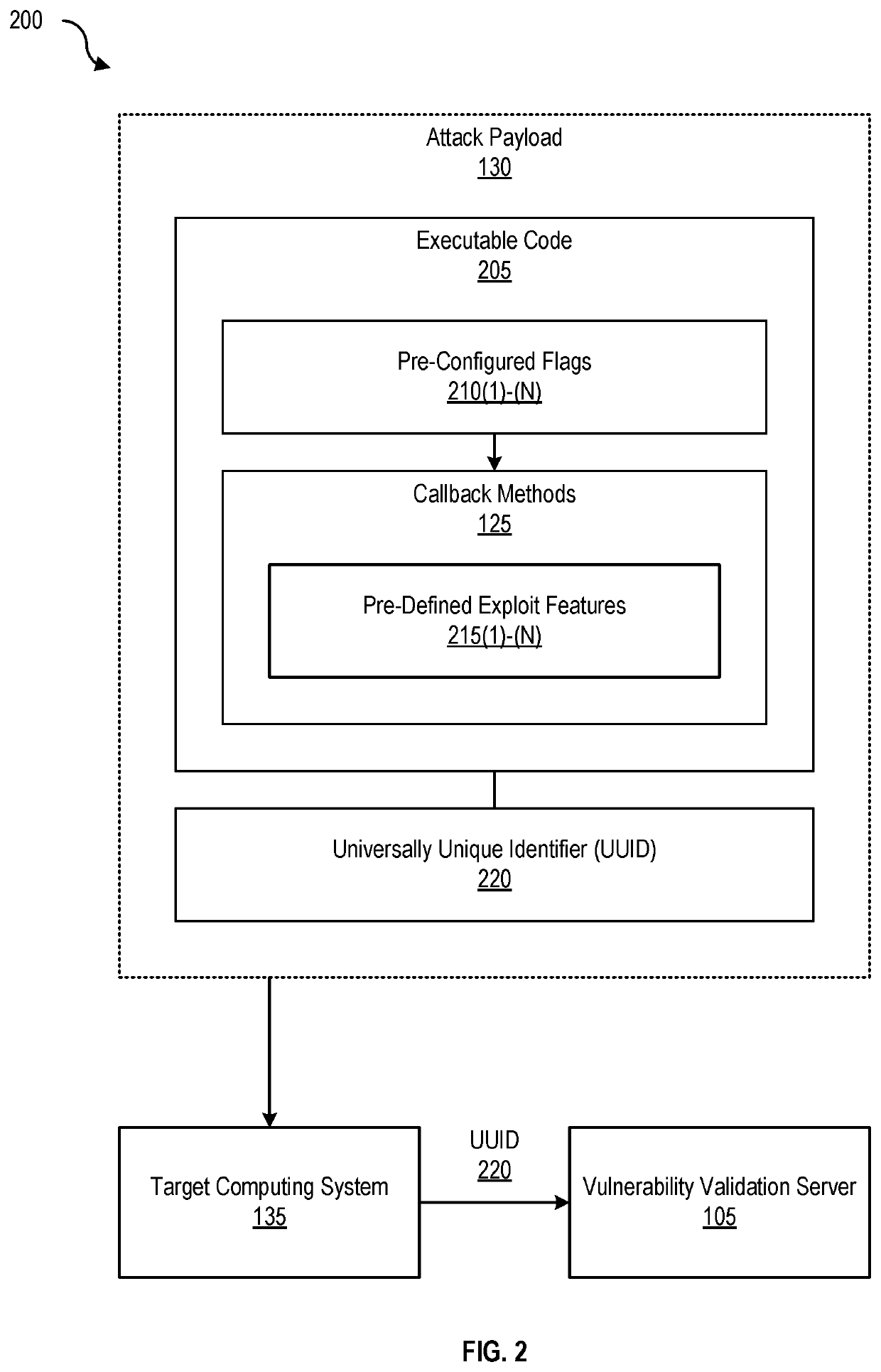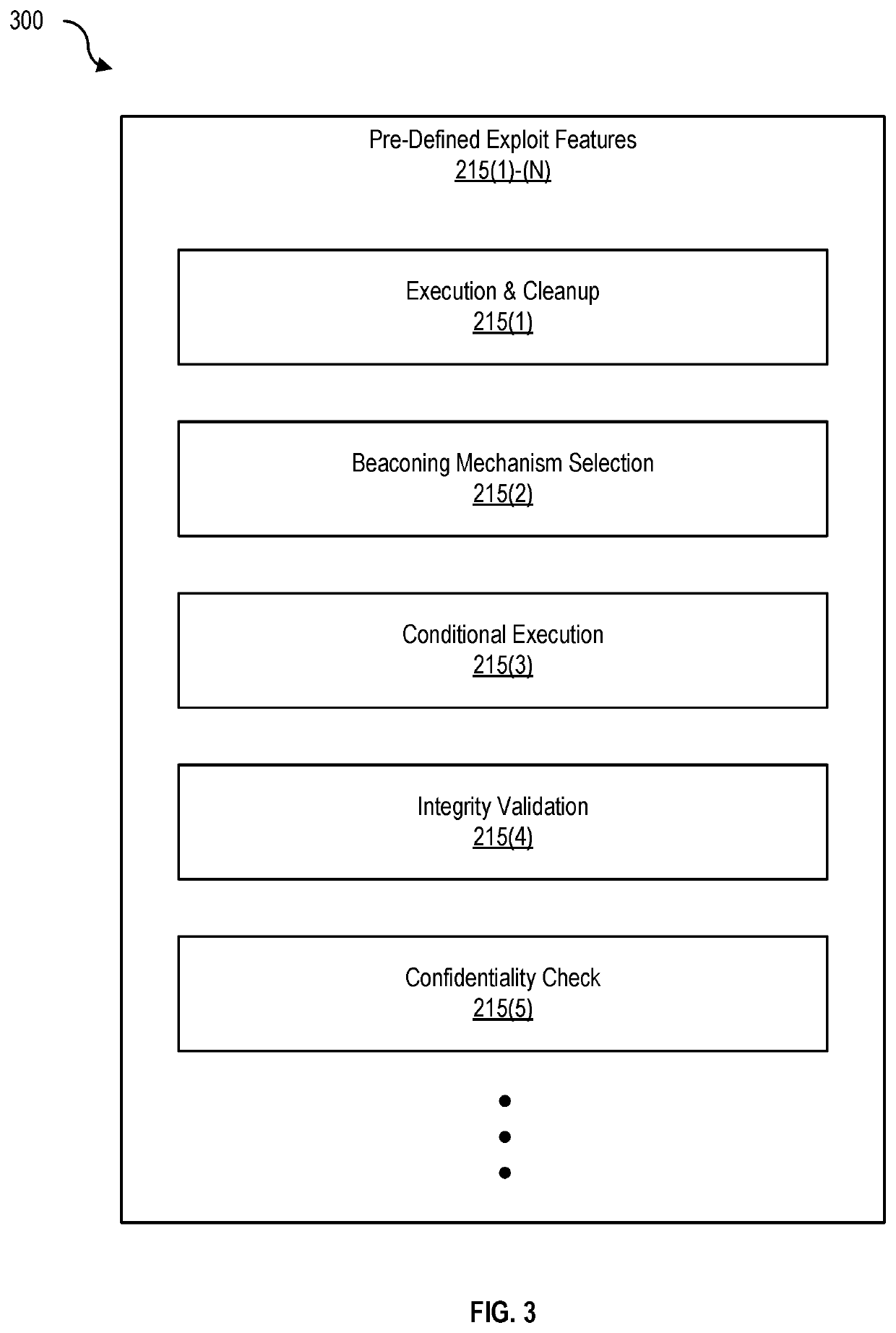Vulnerability validation using lightweight offensive payloads
a technology of vulnerability validation and offensive payload, applied in computing, instruments, electric digital data processing, etc., can solve problems such as security breaches and significant technology-related challenges
- Summary
- Abstract
- Description
- Claims
- Application Information
AI Technical Summary
Benefits of technology
Problems solved by technology
Method used
Image
Examples
example lightweight offensive payload
[0030]FIG. 2 is a block diagram 200 of a lightweight offensive payload (e.g., attack payload 130), according to one embodiment. Attack payload 130 includes at least executable code 205 with pre-configured flags 210(1)-(N) and callback methods 125 as well as a universally unique identifier (UUID) (also called a globally unique identifier (GUID)). Callback methods include at least pre-defined exploit features 215(1)-(N), examples of which are discussed in greater detail with respect to FIG. 3, infra. In this example, UUID 220 is a 128-bit number used to identify information that indicates that a given vulnerability has been validated.
[0031]In one embodiment, attack payload generator 115 generates attack payload 130 with executable code 205 and UUID 220 that is limited by an execution scope that includes one or more pre-defined exploit features 215(1)-(N) for validation code execution (e.g., execution of executable code 205 on target computing system 135) associated with vulnerability ...
example networking
Environment
[0070]FIG. 9 is a block diagram of a networked system, illustrating how various computing devices can communicate via a network, according to one embodiment. Network 155 generally represents any type or form of computer network or architecture capable of facilitating communication between vulnerability validation server 105 and target computing system 135. For example, network 155 can be a Wide Area Network (WAN) (e.g., the Internet) or a Local Area Network (LAN). In certain embodiments, a communication interface, such as communication interface 845 in FIG. 8, may be used to provide connectivity between vulnerability validation server 105 and target computing system 135, and network 155.
[0071]Vulnerability validation engine 110 may be part of vulnerability validation server 105, or may be separate. If separate, vulnerability validation system 905 and vulnerability validation server 105 may be communicatively coupled via network 155. All or a portion of embodiments may be ...
PUM
 Login to View More
Login to View More Abstract
Description
Claims
Application Information
 Login to View More
Login to View More - R&D
- Intellectual Property
- Life Sciences
- Materials
- Tech Scout
- Unparalleled Data Quality
- Higher Quality Content
- 60% Fewer Hallucinations
Browse by: Latest US Patents, China's latest patents, Technical Efficacy Thesaurus, Application Domain, Technology Topic, Popular Technical Reports.
© 2025 PatSnap. All rights reserved.Legal|Privacy policy|Modern Slavery Act Transparency Statement|Sitemap|About US| Contact US: help@patsnap.com



